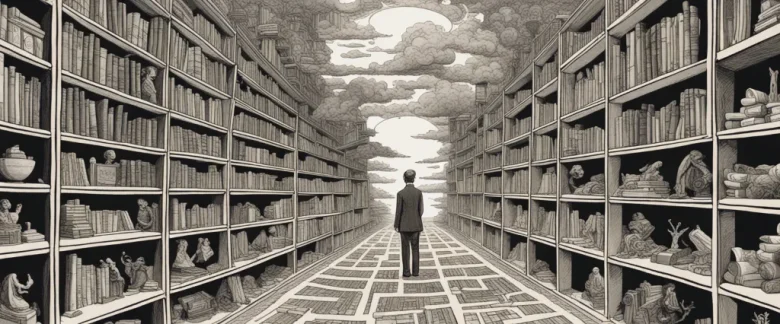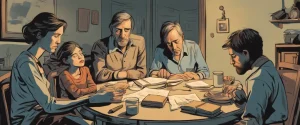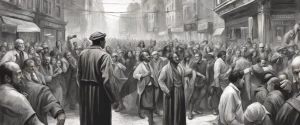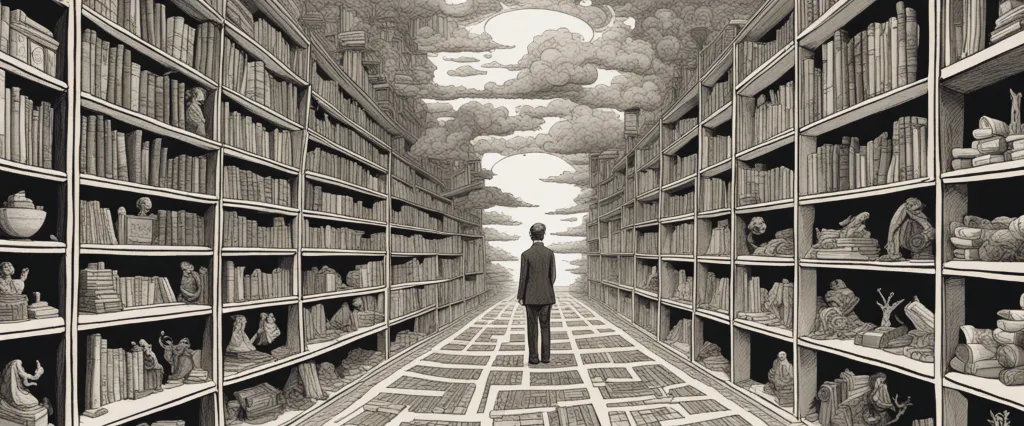
In “The World of Yesterday” by Stefan Zweig, readers are transported to a murky period in history, marred by political unrest and the loss of cultural identity. Through his thought-provoking memoir, Zweig shares his personal experiences and observations, offering a unique insight into the turbulent times he lived through. Zweig, a prominent Austrian writer, was born in 1881 and became known for his works of fiction, poetry, and biographies. His writings captured the essence of his era, illuminating the complexities of human nature and the fragility of society. As a witness to the rise of nationalism and the devastating aftermath of World War I, Zweig provides a compelling and introspective account of a bygone era, offering valuable historical and philosophical perspectives that resonate even today.
Chapter 1: A World on the Brink
Chapter 1 of “The World of Yesterday” by Stefan Zweig serves as an introduction to the book, setting the stage for the tumultuous events that Zweig would witness and experience during his lifetime.
Zweig begins by painting a vivid picture of pre-World War I Europe, a time of relative peace and prosperity, where the “sun shone brightly.” He describes the cosmopolitan cities, flourishing arts and culture, and the sense of unity among nations. However, this idyllic world was about to crumble under the weight of unprecedented violence and destruction.
Zweig highlights the outbreak of World War I as the pivotal event that changed everything. He illustrates the naive enthusiasm that engulfed the masses at the beginning of the war, as people were blinded by nationalistic fervor and a misguided sense of glory. However, soon the horrific reality of the war set in, plunging Europe into a devastating conflict that would shatter the world as they knew it.
The author reflects on the profound impact that war had on society, politics, and individual lives, as he himself witnessed the destruction and the loss of loved ones. He stresses how war brought forth a wave of radical ideologies, fostering bitterness and a breakdown of trust between nations. This, in turn, contributed to the rise of totalitarian regimes and the erosion of democratic values.
Zweig also notes the technological advancements that emerged during this era, changing the world at a rapid pace. While these inventions seemed promising, Zweig warns that they also brought new dangers and ethical questions that society was ill-prepared to answer.
In this first chapter, Zweig sets the stage for the rest of his memoir, encapsulating the feelings of nostalgia for a bygone era and the imminent doom that was to follow. He introduces the central theme of his book: the loss of a world he cherished and the need to preserve its memory.
Chapter 2: Intellectual and Cultural Vibrancy
Chapter 2 of “The World of Yesterday” by Stefan Zweig explores the intellectual and cultural vibrancy of pre-World War I Europe. Zweig takes us on a nostalgic journey through his memories, detailing the flourishing artistic and intellectual scene of the time.
Zweig begins by highlighting the multifaceted nature of this era, where thinkers and artists from various disciplines coexisted and influenced each other. He emphasizes the cultural melting pot that was Vienna, where creative minds congregated and exchanged ideas. From literature and poetry to music and visual arts, the city was a hub of innovation and artistic experimentation.
Zweig introduces prominent figures such as Rainer Maria Rilke, Sigmund Freud, and Hugo von Hofmannsthal, who were instrumental in shaping the intellectual landscape of the era. He gives vivid descriptions of cafes and salons, where intellectuals would gather for lively discussions, pushing the boundaries of their respective fields. These interactions fostered a sense of collective creativity and intellectual growth.
Despite this vibrancy, Zweig also reflects on the emptiness and superficiality that permeated the society. The perception of continuous progress and prosperity eventually led to complacency and a detachment from reality. He expresses his concern that the intense pursuit of pleasure and entertainment had superseded deeper intellectual contemplation.
However, this sense of detachment and superficiality would prove to be short-lived, as the chapter concludes on a foreboding note. Zweig hints at the impending collapse of this vibrant culture, foreshadowing the devastation of World War I, which would bring an end to the European intellectual and cultural renaissance.
In summary, Chapter 2 of “The World of Yesterday” delves into the intellectual and cultural richness of pre-war Europe. Zweig presents a nostalgic account of the artistic and intellectual scenes, emphasizing the interconnectedness of various disciplines and the vibrancy of cities like Vienna. Nevertheless, he also underscores the hollowness and vulnerability that lurked beneath the surface, ultimately leading to the collapse of this golden era with the outbreak of World War I.
Chapter 3: The Great War and Its Aftermath
Chapter 3 of “The World of Yesterday” by Stefan Zweig is titled “The Great War and Its Aftermath,” and in this chapter, the author provides a comprehensive account of the impact of World War I on Europe and its aftermath.
Zweig describes the initially enthusiastic atmosphere that engulfed Europe at the outbreak of the war in 1914, with people believing it would be a short conflict leading to a triumph for their respective nations. However, as the war progressed, the author illustrates the devastating effects it had on both the soldiers and civilians. He discusses the brutal conditions of the front lines, the millions of lives lost, and the profound trauma experienced by those who survived.
Zweig delves into the war’s societal consequences, particularly the disillusionment and loss of faith in the future that permeated throughout Europe. He explores the psychological impact on individuals, with a generation left scarred and emotionally wounded. Furthermore, he highlights how the war accelerated societal changes, leading to the erosion of traditional authority structures and the rise of new ideologies.
After the armistice, Zweig delves into the aftermath of the war, focusing on the treaties that were signed, most notably the Treaty of Versailles. He critiques the punitive nature of the treaty, which he believes contributed to the seeds of future conflicts. The author also addresses the countless refugees and displaced persons who were left destitute, representing the human cost of the war.
Overall, Chapter 3 illustrates the profound and irreversible changes brought about by the Great War. Zweig’s narrative explores the physical, psychological, and societal consequences of the conflict, shedding light on the devastation and despair that marked this crucial period in European history.
Chapter 4: The Decline of Europe
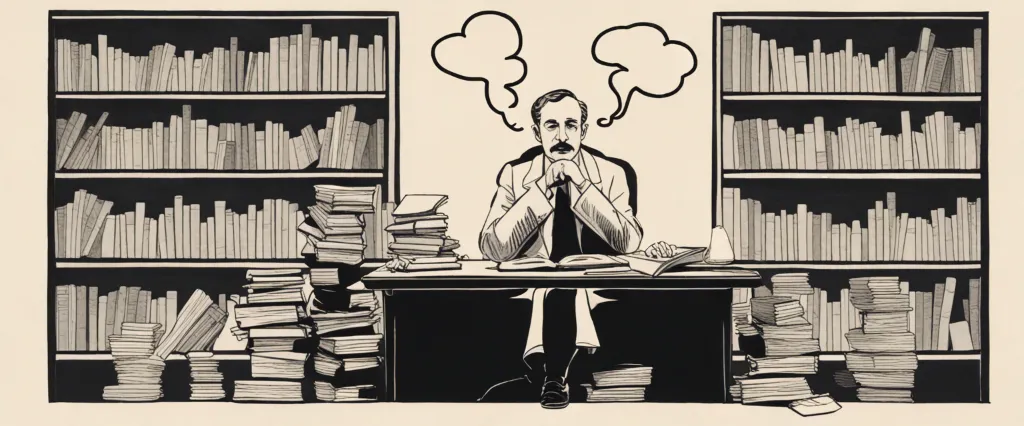
Chapter 4 of Stefan Zweig’s book, “The World of Yesterday,” titled “The Decline of Europe,” focuses on the societal and political changes that took place in Europe during the early 20th century.
Zweig begins the chapter by describing the aftermath of World War I, which deeply affected the European continent. The war led to an unprecedented destruction, loss of life, and disillusionment among the people. It shattered the long-standing belief in progress and civilizational development, plunging Europe into chaos. Zweig elaborates on how European society struggled to come to terms with the new reality defined by political instability, economic crises, and social upheaval.
The author emphasizes the rise of extremist ideologies, such as Fascism and Communism, that exploited the despair and vulnerability of the masses. Zweig notes that these ideologies thrived in an atmosphere of fear, resentment, and the desire for radical change. He also discusses the role of nationalism in exacerbating divisions among European nations, leading to the deterioration of international cooperation and ultimately culminating in the outbreak of World War II.
Zweig examines the consequences of this decline for culture and the arts, highlighting a loss of hope and the emergence of a “cult of destruction.” The flourishing of avant-garde movements represented a rejection of traditional values in an attempt to create something new in the face of societal collapse. However, Zweig argues that this artistic rebellion ultimately contributed to the erosion of European civilization.
In summary, Chapter 4 of “The World of Yesterday” explores the impact of World War I, the rise of extremist ideologies, the failure of international cooperation, and the cultural consequences of these developments. Zweig portrays an image of a Europe struggling to recover from the devastation of war while becoming increasingly divided and vulnerable to destructive forces.
Chapter 5: Escaping to the New World
Chapter 5 of “The World of Yesterday” by Stefan Zweig explores his experience of escaping to the new world, specifically America, during the atrocities of World War II. In this chapter, Zweig describes the profound changes that were taking place in Europe as the war escalated and the menace of the Nazi regime became more apparent. He shares his growing sense of despair and hopelessness as he witnessed the destruction of his beloved Vienna and observed the rise of antisemitism and persecution of intellectuals.
Amidst this turmoil, Zweig recalls how he and his second wife, Lotte Altmann, decided to escape to the New World, a place where they hoped to find sanctuary and solace. The process of fleeing Europe was complex and fraught with difficulties, as obtaining visas and navigating bureaucratic red tape proved challenging. Zweig recounts the many bureaucratic obstacles they encountered during this period and the disappointment they faced when visa applications were repeatedly rejected.
Despite these setbacks, Zweig manages to secure a visa to America. Arriving in the United States, he describes his mixture of relief and grief over leaving his homeland behind. He observes the stark differences between Europe and America, acknowledging the rapid pace of life and the melting pot of various cultures that the New World offered.
However, Zweig remains haunted by a sense of rootlessness and a yearning for his lost home. He acknowledges the difficulty of adapting to a new life and the challenges of maintaining his identity as a European intellectual in a foreign land. This chapter reflects the author’s personal journey of escape and the bittersweet emotions associated with starting anew in an unfamiliar world.
Chapter 6: Nostalgia for a Vanished Era
In Chapter 6: Nostalgia for a Vanished Era of the book “The World of Yesterday” by Stefan Zweig, the author delves into his personal longing for a bygone era. He takes the reader on a journey through his past memories, reflecting on the rapid changes witnessed during his lifetime.
Zweig begins by contemplating how the world has changed since his childhood. He describes the introduction of modern technology, such as the automobile and the telephone, which disrupted the tranquility of the past. He mourns the loss of a slower, more intimate way of life that has been replaced by a fast-paced, impersonal society.
The author’s nostalgia intensifies as he reminisces about his youth in Vienna, which he considers the pinnacle of a refined culture. Zweig laments the disintegration of the Austro-Hungarian Empire and the subsequent dissolution of the cosmopolitan European society that once thrived. He mourns the destruction caused by World War I, which shattered the unity and peaceful coexistence among nations.
Zweig also reflects on the decline of intellectual pursuits and artistic expression in a world driven by consumerism and materialism. He highlights the loss of the meticulous craftsmanship and attention to detail that characterized the past.
Amidst this nostalgia, Zweig acknowledges the necessity of progress and the inevitability of change. However, he yearns for a time when humanity placed greater emphasis on human relationships, refined culture, and intellectual pursuits.
In conclusion, Chapter 6 captures Zweig’s sentimental longing for an era that represented an idealized way of life. It serves as a poignant reflection on the profound impact of societal transformations and the loss of a cherished past.
Chapter 7: The Rise of Nationalism and Fascism
Chapter 7 of “The World of Yesterday” by Stefan Zweig, titled “The Rise of Nationalism and Fascism,” delves into the political and social conditions that led to the emergence of nationalist movements and the fascist regimes that dominated Europe in the early 20th century.
Zweig begins by depicting the aftermath of World War I and the disillusionment that settled across Europe. The Treaty of Versailles, which imposed harsh conditions on defeated nations, left many feeling humiliated and resentful. Amidst this despair, the idea of nationalism gained momentum, promising to restore pride and unity to fractured societies.
Nationalism, as Zweig describes, was a powerful force that exploited people’s yearning for identity and belonging. It forged a sense of collective greatness and racial superiority, often at the expense of minority groups. The author underscores the dangers of nationalism, emphasizing the dehumanization and exclusion it perpetuated.
The chapter then focuses on the proponents of fascist ideologies and their rise to power. Mussolini’s Italy and Hitler’s Germany are examined in particular. Zweig provides insight into the methods employed by these fascist leaders, such as the brainwashing propaganda, censorship, and the suppression of dissent. He illuminates how masses were seamlessly mobilized behind these leaders, driven by their desire for a unified and powerful nation.
Zweig concludes by highlighting the underlying factors that allowed fascism to flourish. Economic instability, the failure of parliamentary systems, and the absence of effective international cooperation all played significant roles in the propagation of these extreme ideologies.
Overall, in this chapter, Zweig offers a comprehensive overview of the social and political dynamics that led to the surge of nationalism and the rise of fascism in Europe. He warns against the destructive consequences of these ideologies, urging readers to remain vigilant against similar dangers in the future.
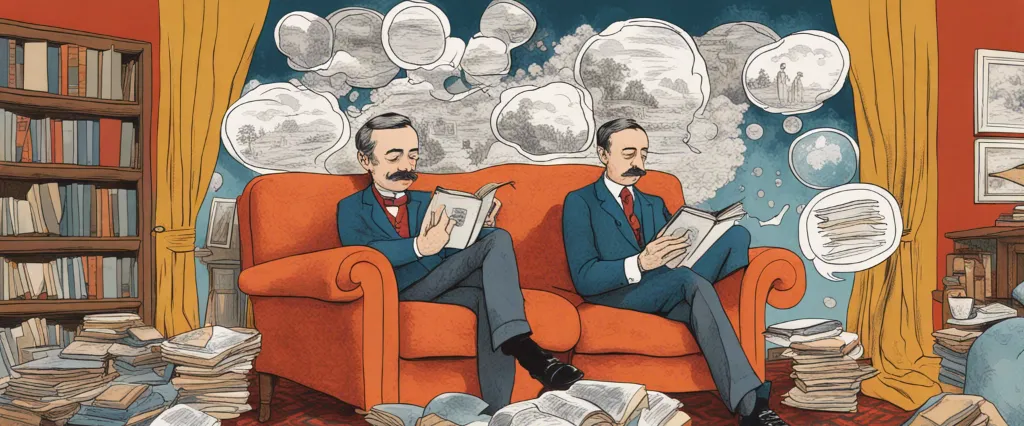
Chapter 8: Reflections on a Lost World
In Chapter 8 of “The World of Yesterday” by Stefan Zweig titled “Reflections on a Lost World,” the author laments the gradual erosion of the cultural and intellectual values that were prevalent in Europe before the First World War. Zweig begins by expressing his deep appreciation for the Enlightenment era, marveling at the guiding principles of reason, tolerance, and progress that dominated society during that time.
He goes on to discuss the impact of the war, which he sees as responsible for dismantling the foundations of this enlightened world. Mass killings, militaristic ideals, and the breakdown of international communication and understanding all contributed to the destruction of Europe’s harmony and intellectual vibrancy.
Zweig mourns the loss of the cosmopolitan atmosphere that once flourished in major cities like Vienna and Paris. He recalls fond memories of vibrant artistic and intellectual circles, where people from various backgrounds and nationalities engaged in enlightened discussions.
However, he concludes that this world is now all but lost. Zwieg reflects on the rise of nationalism and the surrendering of reason to blind fervor, evidenced by the subsequent emergence of fascism and totalitarianism.
In this chapter, Zweig highlights the significance of this lost world, emphasizing how it fostered human understanding, appreciation for art, and a climate of peace. He laments the erosion of these values, urging readers to remember the past and strive for a society where rationality and tolerance can flourish once again.
After Reading
In conclusion, “The World of Yesterday” by Stefan Zweig is a captivating memoir that offers a poignant reflection on the tumultuous times of the early 20th century. Zweig’s evocative writing takes the reader on a journey through his personal experiences, vividly portraying the thriving cultural and intellectual atmosphere of his era, contrasted with the eventual collapse into war, violence, and despair. Through his honest and introspective narrative, Zweig compels us to reflect on the destructive power of nationalism and the importance of preserving humanism, while reminding us of the enduring resilience of the human spirit in the face of adversity. This book serves as a timeless testament to the fragility and significance of peace, reminding us to cherish the cultural achievements and shared humanity that binds us all.
1. The Great Gatsby” by F. Scott Fitzgerald – This classic novel takes us back to the roaring twenties and explores themes of love, wealth, and the American Dream. With its poetic language and vivid characters, it offers a captivating glimpse into the Jazz Age.
2. “To Kill a Mockingbird” by Harper Lee – Set in the 1930s, this Pulitzer Prize-winning novel tells the story of young Scout Finch as she navigates racial tension and injustice in the deep South. With unforgettable characters and powerful themes of compassion and morality, “To Kill a Mockingbird” is a must-read.
3. 1984″ by George Orwell – This dystopian masterpiece showcases a totalitarian society where Big Brother monitors every aspect of citizens’ lives. Orwell’s thought-provoking novel raises questions about surveillance, control, and the manipulation of truth, resonating strongly with our modern world.
4. “The Kite Runner” by Khaled Hosseini – Taking place against the backdrop of war-torn Afghanistan, this emotionally charged narrative explores friendship, betrayal, and redemption. With beautiful prose and a compelling storyline, “The Kite Runner” offers an intimate portrait of human resilience and forgiveness.
5. The Alchemist” by Paulo Coelho – This enchanting allegorical novel follows the journey of Santiago, a young shepherd seeking his personal legend. Filled with spiritual insights and profound life lessons, “The Alchemist” inspires readers to pursue their dreams and embrace the idea that everything happens for a reason.
